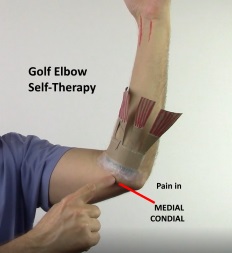At age 76 I thought I had learned golf in about a year. I broke 100 on 18 holes four times (but I was not going to break that to you all in a blog until it was more of a regular thing). It did seem that I had a lot to share with the 75 year-old taking up a little golf…and then I hit the 13th hole. Really, it was the 13th hole…on the fairly challenging West Seattle municipal course.
After I told you all how to save your back by lifting your trailing heel as you follow through. I combined about three different planes of torque in the swing and blew out a disc, there on the 13th hole. Now these were the angular shoulder rotations and horizontal hip rotations and leg-to-leg weight shift that you see from all the young instructors and in most instructional videos. Trying to remember and execute this in 1/3 second makes all this expertise devastatingly, murderously, wrong for a 76 year old.
My back had seemed a little stiff before, but not enough to stop. However, there was a deep gully on the 13th hole that I had to drive across. I made a mighty swing… all wrong. Anyone with herniated discs in their back will tell you they immediately look upon the future through waves of pain they think may never end. After almost collapsing, I created painful baby steps across three fairways to the clubhouse behind my roller/walker, and waited for the others to finish. Perhaps I could get into the car to drive home, but was that the end of golf?
Fortunately, I had been trying to understand the work of Kiran Kanwar, and I had intended to include a link to her interview on Senior Golfer Advisor, which has some great podcasts of general interest. But now my interest was not general. Nothing focuses you like a sheer wall of pain that seems to guarantee you will never lift a golf club again.
Again lucky for me, Kiran was coming to Seattle to visit relatives after completing a PhD from Texas Woman’s University, doing her studies on the scientific biomechanics of golf at the University of Southern California. She’s getting a lot of attention in scientific journals now because her findings might significantly affect the game of golf. You should listen to her podcast: Link to Kanwar podcast or find a lot more on Kiran’s background and methods .
All of which is to say I think she may have saved my golfing life. When she took me through the proper biomechanics, they seemed nothing like what lessons or numerous videos or champions-in-slow-motion looked like. Nothing whatsoever. But when I swung to Kiran’s precise guidance, there was no back pain. Theoretically (and thank God practically) there probably could be no back pain. And not only that, the ball went higher and straighter than I’d ever hit it before, time after time.
However, I worried. Would this “safe” swing ever give me power? At that point I was allowed to watch some of Kiran’s work with Dean Davison (, whose excellent SeniorGolfAdvisor.com podcast on Kiran I hope you have listened to by now). Dean is a very experienced golfer and instructor over 30 years, and like the Broadway dancer, he could pick up on any new set of steps. He had told me that using Kiran’s system he’d hit his first 16 greens in regulation on his first try. But power? Then I watched as his Driver sent balls sailing out high and over 250 yards. One after another, Kiran gave some kind of arcane evaluation to each. (For me each of those shots would have made my year…)
So for the 76 year-old with golf delusions and a crumpled back, it seemed a minor miracle. I’m working at it and getting more consistency and slightly more distance…and feeling no pain. For someone who has recently embraced golf, I am awfully thankful. This is what real Hope looks like!
Copyright 2019 — David Hon



